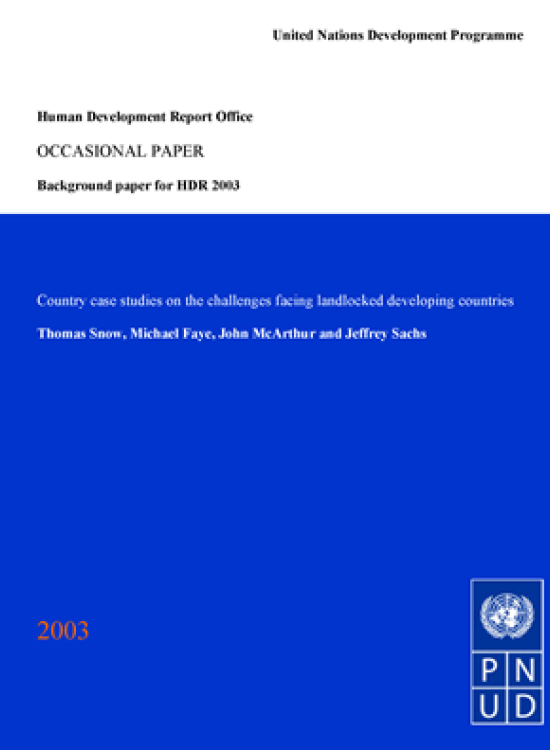Country case studies on the challenges facing landlocked developing countries

Download Report by Language
Document
landlockedcountries2003.pdf
(1.09 MB)
Citation
Snow, Thomas, Faye, Michael, McArthur, John, Sachs, Jeffrey. 2003. Country case studies on the challenges facing landlocked developing countries. New York.
Country case studies on the challenges facing landlocked developing countries
Posted on: January 01, 2003
Over two centuries ago, Adam Smith suggested that the inland parts of Africa and Asia were the least developed areas of the world and that due to the difficulty of trade in those areas, they would not benefit from the gains to specialisation of their coastal neighbours. Two hundred years later, the Human Development Report 2002 paints a stark picture for the landlocked countries of the world: it classifies thirteen of the modern landlocked countries as low development; nine of these are amongst the world’s twelve least developed countries; none of the non-European landlocked countries are classified as high human development. What are the specific challenges facing landlocked countries? While numerous planning papers, legal documents, and transport studies have attempted to address these questions, these papers focus on specific nations or regions, thus precluding a global cross country analysis. Other papers consider agglomerated economic, social, and financial data for landlocked countries thereby not addressing the specific problems of the political, transit and social environment in these countries. This report furthers the discussion by presenting a systematic assessment of all 30 landlocked countries with a Human Development Index less than 0.76.